Gardening in West Texas can be a rewarding experience, even for those who consider themselves beginners. The arid climate, scorching summer temperatures, and limited water supply, however, present unique challenges. In this guide, Todd Hooper, the General Manager at Garden World for 27 years, and Beth Hamaty, a Master Gardener, share their knowledge with easy and practical gardening tips to prepare your yard and garden to thrive this year.
The publisher may make a commission on purchases from the following links.
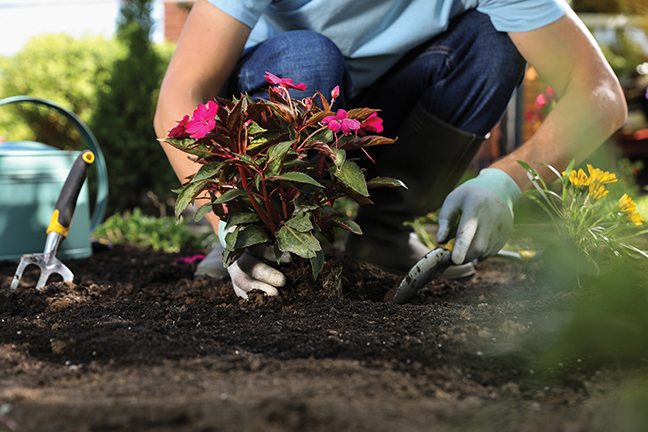
First Things First: A Word on Watering
The biggest gardening problem in West Texas, according to Hooper and Hamaty, is overwatering, which leads to root rot. Root rot is caused by watering too often for too short of a time period. The water is not able to penetrate deep into the root system. Once root rot starts, it’s hard to stop. Hooper recommends using a product like Hydretain that maximizes water consumption, and also watering less often for longer will help prevent root rot.
Both Hooper and Hamaty recommend watering a lawn or garden once a week for about 30-45 minutes, or the equivalent of an inch of water. Hamaty adds, “Overwatering is about how frequently you water, not how much you water.”
For container gardening outside, water slightly more often. “When the soil pulls away from the edge of the pot, it is time to water,” Hamaty explains. She adds that if the leaves droop in the afternoon, it is a sign that they are protecting themselves from the sun. But if they droop first thing in the morning, they need water. Hooper adds that if the tips of the leaves get brown, it is a sign of overwatering.
Be observant of insects and fungus. “If you water a garden right, you won’t have much fungus. The healthier the garden, the less apt it is to have an insect or fungus problem,” Hooper says. “The biggest fungus we have in this area is black spot. It shows little bitty spots on the leaves, and you’ll need to take care of that. Or we have powdery mildew – it’s the easiest one to take care of. The fungus spreads more during a hot, humid time. Don’t water as much when the humidity is high, right after a rain.”
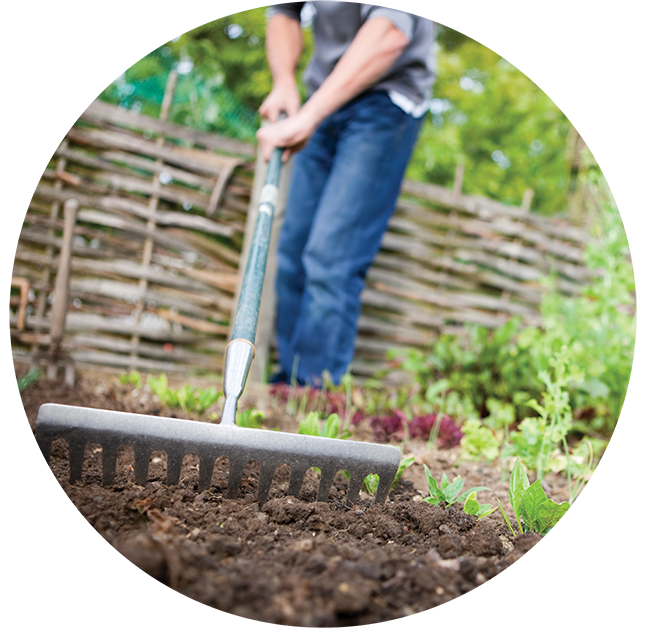
Okay, Let’s Get Started: Prepare Your Soil
For a yard, this means applying a pre-emergent in late February/early March. Then take care of your dead grass and leaves. A good composting product can help with this. “Humic is what we recommend at Garden World,” Hooper says. “It allows you to use less of everything – fertilizer, weed control, and water. And in West Texas, anything that helps conserve water is gold.” (Also apply Humic after the last mow in the fall.)
For a garden, use a soil conditioner or cotton burr compost. “If you want a supreme garden, spend a little more money and make it worth your while,” Hooper advises. Ask your local nursery for suggestions for a soil conditioner.
Next, for lawns and gardens, maximize water retention. “Once West Texas weather gets hot with limited rain, apply Hydretain, which reduces watering needs by half,” suggests Hooper. This can be applied to your yard, flower beds, potted plants, everywhere. At minimum, apply once a year in mid-June or July. More regularly, apply every 90 days. Hydretain is organic, so vegetable gardens benefit as well.
In shrub and flower gardens, apply your weed barrier and use treflan herbicide granules as a pre-emergent. Once your flowers are set, sprinkle the granules on top to form an oily base to keep other plants from coming up. “This doesn’t hurt the existing root system,” explains Hooper, “and it is great to use in flower beds or in potted plants. Again, the healthier your plants are, the less likely the bugs or fungus will attack them.”
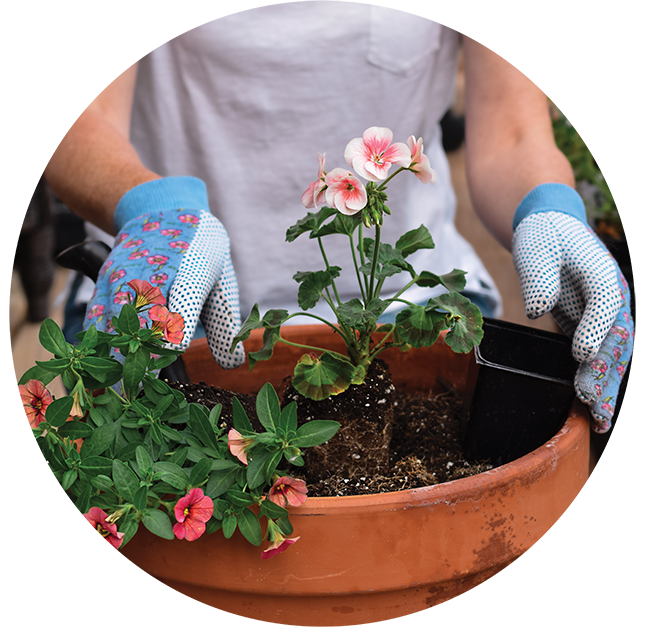
What to Plant?
“A massive veggie garden or flower bed will get overwhelming,” Hamaty explains. “Start small with a container garden – flowers or vegetables.” She recommends researching companion planting to see which flowers and vegetables complement each other. Whatever fertilizer you use, follow the instructions on the packaging exactly. Fertilizer helps so much in the hot summer months. Ask a merchant at a local nursery for advice.
Hamaty herself gardens for wildlife. “I tend to focus on flowering plants and things with berries. I would recommend that people try to stick with Texas natives. Native plants can handle higher heat and colder winters. They may die back into the ground but usually they’ll come back in the spring again.” With perennials (plants that live more than a year), there’s a saying with the Master Gardeners: “First year, sleep; second year, creep; third year, leap!” Hamaty advises to be patient with perennials.
Wait to seed or sod St. Augustine or Bermuda grass. The Master Gardener website recommends waiting until nighttime temperatures are around 65 degrees consistently before filling in bare spots in your lawn. Additionally, fertilizer (the Club recommends high nitrogen) should wait as well. Springtime is for getting your yard ready. Early summer would be a better time to seed, sod, and fertilize.

You are Ready!
Apply pre-emergent, condition the soil of garden beds, fertilize, do not overwater (use Hydretain), and watch out for fungus and insects – these are the basics of gardening and getting your yard and garden in tip top shape. Peruse the Master Gardeners’ website for month-specific suggestions and more plant recommendations for the Big Country. The last Saturday of each month, attend the Master Gardeners’ programs at the libraries. (The library website also has past programs archived.) Visit one of Abilene’s local nurseries like Garden World to find just the right gardening plants and supplies to get started.
PLANT SUGGESTIONS from Garden World
Shrubs – Dwarf Yaupon Holly, Dwarf Burford Holly, Indian Hawthorn, Red Tipped Photinia
Vegetables – Tomatoes, Okra, Peppers, Squash, Peas (Black-Eyed and Purple Hull), Melons (don’t overwater! Black spots on end means overwatered.) Tomato Tip: Once the weather gets really hot, prune half to three quarters off your tomato plants. When the weather cools down, you’ll get a lot more tomatoes in the fall, and you will not need much water through the summer.
Flowers (courtesy of Esther Brooks at Garden World)
- Shade – Caladiums, Colossus, Petunias (partial shade)
- Sun – Bougainvillea, Dianthus, Daisy (Gerber, African), bulbs for fall – plant in early spring
Trees – Live Oaks, Chinese Pistache and Bradford Pears are good ornamental trees (fast growing and produce good shade). Red Oaks struggle until they are established. Tip: If you buy a tree in a pot, don’t dig a hole any deeper, but dig twice as wide and add a good soil conditioner to help the root system get established. Once out of the bucket, make sure the roots aren’t going in a circle. If they are, cut in about four or five places to get them to grow out instead of around.
By Laura Daulton













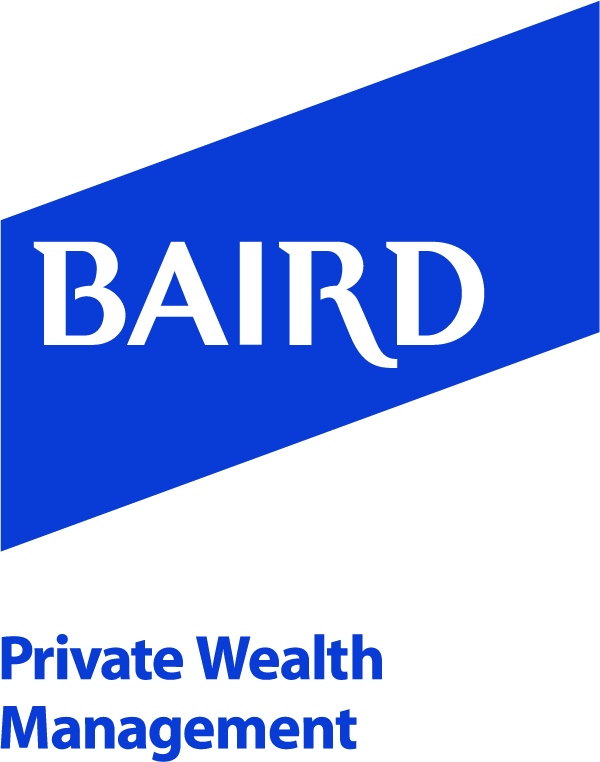








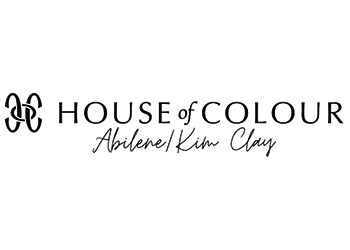




Absolutely a great ARTICLE !! Thanks for the “Professionals” advice for plants, and proper timing, and for when/where/ and how !!